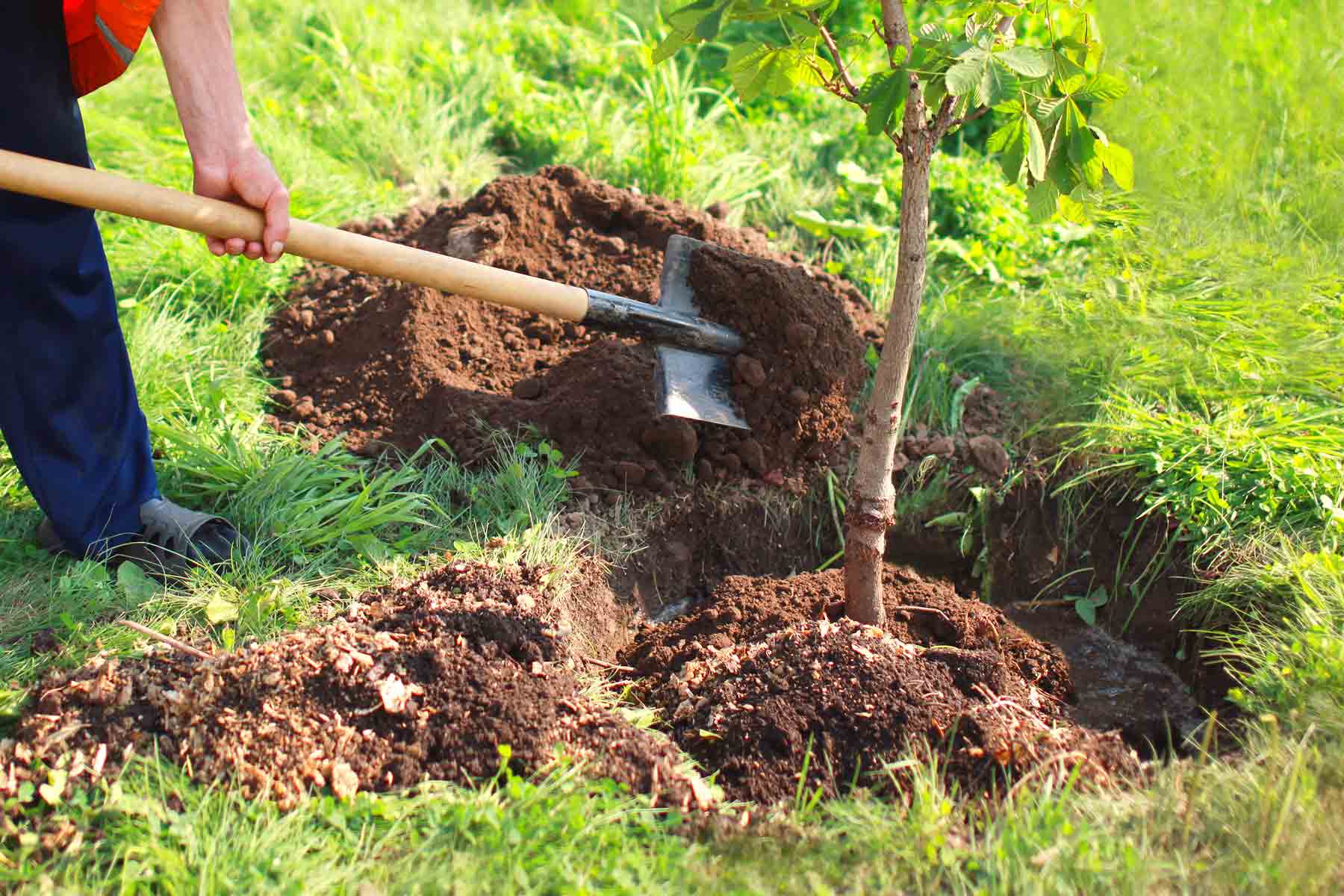Home>Gardening Basics>Understanding Soil>How Much Does 2 Cubic Feet Of Soil Weigh


Understanding Soil
How Much Does 2 Cubic Feet Of Soil Weigh
Modified: February 7, 2024
Learn about the weight of 2 cubic feet of soil and gain a better understanding of soil properties. Find out how soil weight impacts gardening and construction.
(Many of the links in this article redirect to a specific reviewed product. Your purchase of these products through affiliate links helps to generate commission for Chicagolandgardening.com, at no extra cost. Learn more)
Table of Contents
Introduction
Soil is a fundamental component of the Earth's ecosystem, playing a crucial role in supporting plant life and providing a habitat for a myriad of organisms. Understanding the weight of soil is essential for various applications, from gardening and landscaping to construction and engineering projects. In this article, we will delve into the factors that contribute to soil weight, particularly focusing on the weight of 2 cubic feet of soil.
Soil weight is determined by its density, which is influenced by a range of factors including moisture content, organic matter, mineral composition, and compaction. By exploring these elements, we can gain a deeper understanding of how soil weight is calculated and the considerations involved in estimating the weight of a specific volume of soil.
In the following sections, we will examine the concept of soil density and its significance in determining soil weight. We will also explore the various factors that can impact the weight of soil, shedding light on the dynamic nature of this vital natural resource. Additionally, we will provide insights into the methods used to calculate the weight of 2 cubic feet of soil, offering practical guidance for those seeking to assess soil weight for their individual needs.
By unraveling the complexities of soil weight and providing actionable information, this article aims to empower readers with the knowledge to make informed decisions regarding soil usage and management. Whether you are a gardening enthusiast, a construction professional, or simply curious about the science of soil, this exploration of soil weight will equip you with valuable insights into this essential aspect of the natural world.
Understanding Soil Density
Soil density is a critical parameter that influences its weight and, consequently, its behavior and suitability for various applications. Density refers to the mass of soil per unit volume, typically expressed in kilograms per cubic meter (kg/m3) or pounds per cubic foot (lb/ft3). Understanding soil density is essential for assessing its load-bearing capacity, water retention, and overall suitability for supporting vegetation and structures.
The density of soil is influenced by several factors, with the most significant being the composition of the soil itself. Soil consists of mineral particles, organic matter, water, and air, all of which contribute to its overall density. The mineral composition, particularly the size and arrangement of particles, plays a crucial role in determining the density of the soil. For example, soils with smaller particles, such as clays, tend to have higher densities than those with larger particles, such as sands.
Moreover, the presence of organic matter in the soil can also impact its density. Organic matter, derived from decomposed plant and animal residues, tends to decrease soil density by creating pore spaces and enhancing soil structure. These pore spaces, in turn, affect the soil’s ability to retain water and support microbial life, making organic-rich soils vital for agricultural productivity.
Another key factor affecting soil density is its moisture content. The amount of water present in the soil significantly influences its weight and density. Generally, wet soils are denser than dry soils due to the added mass of water occupying the pore spaces between soil particles. This moisture-induced increase in density can have implications for engineering and construction projects, where the weight-bearing capacity of the soil is a critical consideration.
By comprehending the intricacies of soil density and the factors that shape it, individuals can make informed decisions regarding soil management, agricultural practices, and construction endeavors. The next section will delve into the various factors that can impact the weight of soil, providing a comprehensive understanding of the dynamic nature of soil density and its implications for practical applications.
Factors Affecting Soil Weight
Several factors contribute to the weight of soil, influencing its density and overall mass. Understanding these factors is crucial for assessing soil weight and its implications for diverse applications, ranging from construction and agriculture to environmental management. By exploring the key influencers of soil weight, we can gain valuable insights into the dynamic nature of this fundamental natural resource.
- Mineral Composition: The mineral composition of soil, including the size, shape, and arrangement of particles, significantly impacts its weight. Soils with finer particles, such as clays, tend to be denser and heavier than those with coarser particles, such as sands. The mineral composition also affects the soil’s load-bearing capacity and suitability for construction and landscaping projects.
- Organic Matter: The presence of organic matter in soil can influence its weight and density. Organic-rich soils, characterized by a higher content of decomposed plant and animal residues, often exhibit lower densities due to the creation of pore spaces. These pore spaces contribute to the soil’s ability to retain water and support microbial life, impacting its overall weight and structural characteristics.
- Moisture Content: The moisture content of soil is a significant determinant of its weight. Wet soils, containing higher levels of water, are denser and heavier than dry soils. The presence of water in the soil’s pore spaces adds to its overall mass, affecting its load-bearing capacity and suitability for various engineering and agricultural purposes. Managing soil moisture is crucial for optimizing its weight and performance in different applications.
- Compaction: The degree of compaction in soil can influence its weight and density. Compacted soils, resulting from natural processes or human activities such as construction and heavy machinery usage, tend to be denser and heavier than uncompacted soils. Compaction impacts the soil’s porosity and load-bearing capacity, making it a critical factor in determining soil weight for construction and infrastructure projects.
By considering these factors, individuals and professionals can gain a holistic understanding of soil weight and its implications for specific endeavors. The next section will delve into the methods used to calculate the weight of 2 cubic feet of soil, providing practical insights for estimating soil weight in real-world scenarios.
Calculating the Weight of 2 Cubic Feet of Soil
Estimating the weight of a specific volume of soil, such as 2 cubic feet, involves a straightforward yet essential calculation that considers the soil’s density and moisture content. By following a systematic approach, individuals can determine the approximate weight of 2 cubic feet of soil, providing valuable insights for gardening, construction, and landscaping endeavors.
The following steps outline a simple method for calculating the weight of 2 cubic feet of soil:
- Determine the Soil Density: Begin by identifying the density of the specific type of soil in question. Soil density is typically expressed in pounds per cubic foot (lb/ft3) and can vary based on factors such as mineral composition, organic matter content, and moisture levels. Reference soil density tables or utilize soil testing equipment to obtain the density value.
- Assess the Moisture Content: Consider the moisture content of the soil, as it significantly influences its weight. If the soil is excessively wet, the moisture content contributes to its overall mass, resulting in a higher weight. Conversely, dry soil with minimal moisture content will weigh less. Understanding the moisture levels is crucial for accurate weight estimation.
- Apply the Formula: Utilize the formula for calculating the weight of soil: Weight = Volume × Density. In this case, for 2 cubic feet of soil, the formula becomes Weight = 2 ft3 × Soil Density (lb/ft3). By multiplying the volume (2 cubic feet) by the soil density, the resulting value represents the approximate weight of the specified soil volume.
- Consider Adjustments: Depending on the specific characteristics of the soil, such as compaction levels and debris content, adjustments may be necessary to refine the weight calculation. Compacted soil may have a higher density, while soils with significant debris content may exhibit variations in weight.
By following these steps and considering the unique attributes of the soil in question, individuals can arrive at a reasonably accurate estimation of the weight of 2 cubic feet of soil. This information is invaluable for planning and executing various projects that require precise knowledge of soil weight, ensuring optimal outcomes and efficient resource utilization.
Armed with the ability to calculate soil weight, individuals can make informed decisions regarding gardening, landscaping, construction, and engineering initiatives, harnessing the power of accurate weight estimations to drive successful outcomes.
Conclusion
Understanding the weight of soil, particularly in the context of 2 cubic feet, is a vital aspect of various disciplines, including agriculture, construction, and environmental management. By exploring the factors that influence soil weight and the methods for calculating it, individuals can gain valuable insights into the dynamic nature of this fundamental natural resource.
Soil density, shaped by factors such as mineral composition, organic matter content, moisture levels, and compaction, plays a pivotal role in determining soil weight. The interplay of these factors underscores the complexity of assessing soil weight and highlights the need for a comprehensive understanding of soil characteristics and behaviors.
By comprehending soil density and its implications for weight, individuals can make informed decisions regarding soil usage, management, and optimization for specific applications. Whether it’s selecting the right soil for gardening, evaluating load-bearing capacity for construction projects, or enhancing agricultural productivity through soil moisture management, the knowledge of soil weight is a valuable asset.
The ability to calculate the weight of 2 cubic feet of soil empowers individuals and professionals to plan and execute projects with precision, ensuring optimal resource utilization and successful outcomes. By considering soil density, moisture content, and other influential factors, accurate estimations of soil weight can be obtained, guiding the decision-making process and contributing to the efficiency and sustainability of diverse endeavors.
In conclusion, the weight of soil is a multifaceted aspect of its nature, reflecting the intricate interplay of various factors that define its properties and behaviors. By embracing the complexities of soil weight and leveraging the methods for its calculation, individuals can harness the power of knowledge to elevate their endeavors, foster environmental stewardship, and contribute to the sustainable utilization of this invaluable natural resource.




